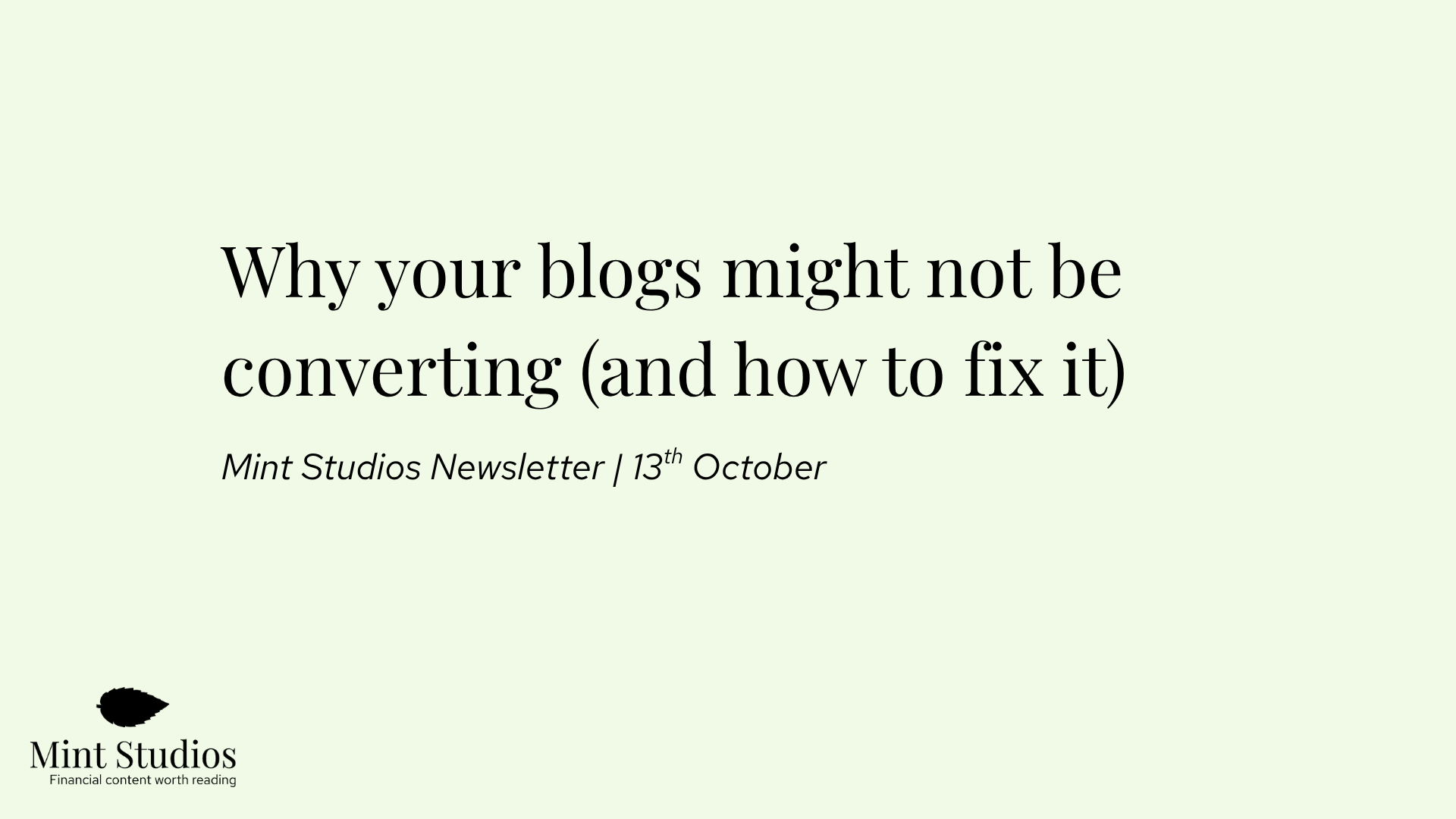We worked with Parpera for over six months, and within that time, our blog content via Parpera’s website was more cost effective for acquiring customer leads than website directed ads.
In this article we’ll cover:
- The situation when we first started: what Parpera needed
- The results: content was more cost effective than ads
- How we did it: expert content and pain point SEO
The team in charge of working with Parpera were the amazing Michelle Maiellaro as content strategist and writer and Suzanne Berthuy as writer, and these results would not have been possible without them.
The situation: what Parpera needed
Parpera is a business banking app designed for freelancers that was founded in 2020 by Daniel Cannizzaro, in Australia.
Parpera’s mission is to help sole traders, freelancers, and entrepreneurs in Australia manage their money with a business money management app designed specifically for them. Parpera allows them to receive and send money, as well as set up and send invoices, save money for taxes and make payments.
When we first started working together, the product was recently launched and was just starting to acquire customers. There were a couple of articles on the blog, and a roadmap to launch new features.
One part of the Parpera mission is financial education, so Daniel engaged Mint Studios for multiple reasons:
- Create content that would help with customer acquisition
- Educate potential and current customers on managing money as a business owner
- Position Parpera is a trustworthy point of authority in the business and money management space
The results: content was more cost effective than ads for lead generation
Before we dive into what we did and how, let's first talk about what we were able to accomplish within our engagement period.
After 6 months, content was a more cost effective method of acquiring customer leads than ads
As you can see from this screenshot, by the end of the six months, organic search was the second highest channel to bring in customers via the website (Parpera were also running ads directly to the App Store). Organic also had the highest conversion rate of all channels (except email).
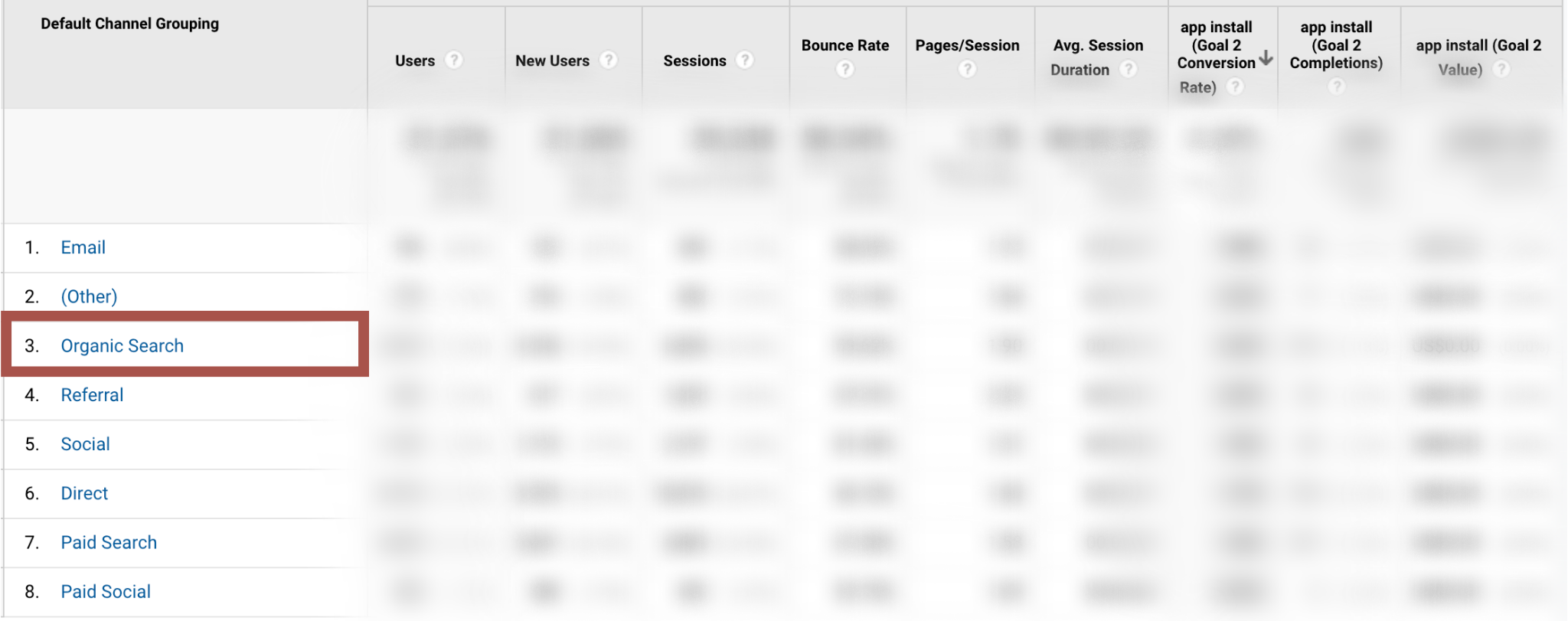
Multiple articles on the front page of Google, beating larger competitors
It took several months and a lot of experimentation and testing, but we managed to get multiple Parpera articles on the front page for incredibly high value keywords such as “sole trader bank account” and “freelancer debit card”.
Here’s one example:
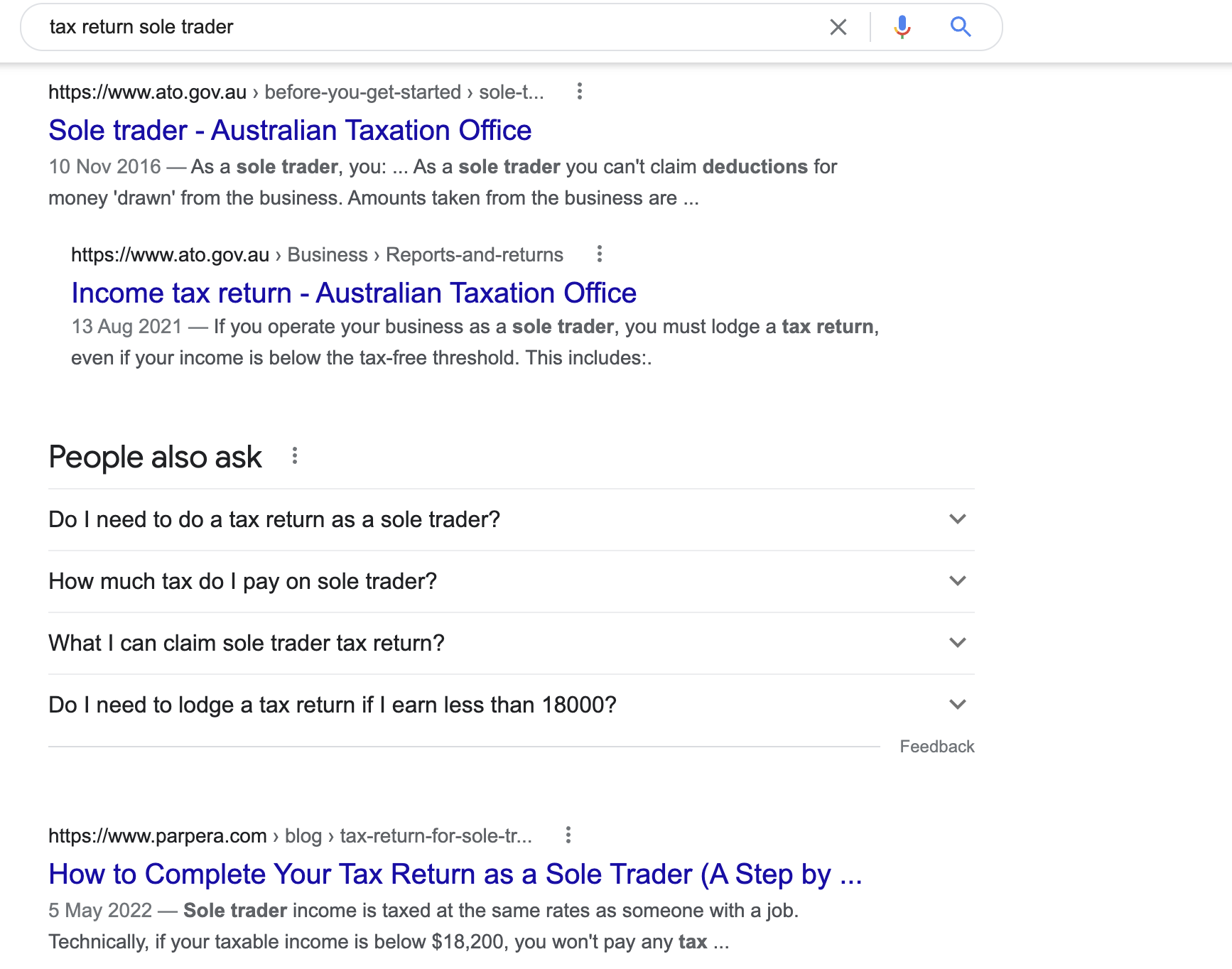
And two other examples of incredibly high intent keywords:


People who are looking for these keywords in Australia are at the bottom of the marketing funnel and very close to converting. In fact, as you’ll see below, the articles that rank for these keywords are the highest converting ones.
A steady increase in monthly organic traffic and leads
And lastly, we did see a boom in organic traffic as well as with leads.
This is a screenshot of Parpera’s search console. Just like that, you can see how organic traffic grew over time.
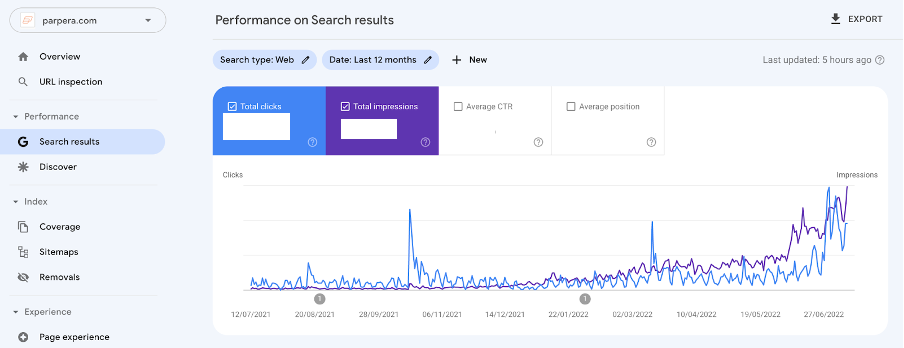
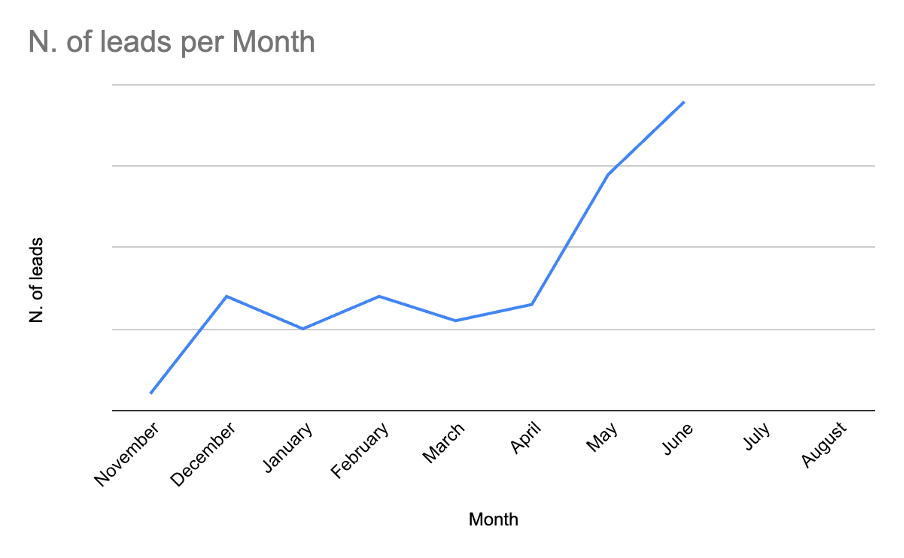
How did we do it? Expert content and pain point SEO
The short answer is that we followed our four pillar framework which we talk about repeatedly on the Mint Studios website:
- Content strategy based on pain point SEO
- Content for the level of the reader and based on interviews
- Content distribution
- Tracking conversions
If you’d like to dig in a bit deeper, you can learn more about how we think and work in these articles:
- What is BOFU (Bottom of the Funnel) Content and Why Is it Important?
- How to Write a Blog Introduction That Converts
- Why You Should Create Content Based on Interviews With Experts
Here’s how that looks like in practice:
Content focused on pain points and common questions
Whereas many agencies and freelancers will start off with keyword research and looking for top of the funnel, high volume keywords, we took a different approach. We wanted to understand pain points and use cases of Parpera’s target market, and only then do research.
To understand pain points, we did a few things:
- Interview Daniel, the founder, on everything he knew about his customers
- Go over all customer research the Parpera team had already done
- Go through all their Design sessions and JTBD research to understand what problems freelancers in Australia face
We ended up with a list of pain points. Here’s some of them:
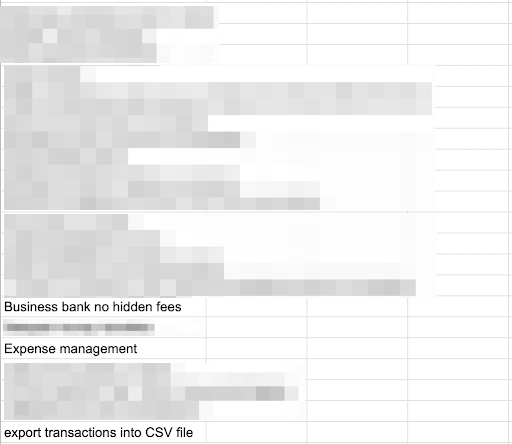
The actual spreadsheet is a lot longer, this is just part of it.
We also asked Daniel about use cases and common questions. Based on that research, only then did we do keyword research. Keyword research essentially consisted of matching keyphrases to the pain points we found. We prioritised intensity of the pain point, rather than high search volume or low competition.
Here are some of the keywords we came up with:

We also followed the “Big 5” framework, which are the common problems customers search up online
- Alternatives to
- Comparison articles
- Articles about pricing
- Best of
- Use cases
We ended up with a calendar and strategy that would focus our content on the bottom of the funnel: customers who know they have a problem and are actively looking for a solution. In this case, this could be:
- Freelancers who wanted to generate invoices that looked professional and worked well
- Freelancers actively looking for a bank account
Content ideas we decided to prioritise included:
- How to set up a sole trader bank account: literally describes the product, so it’s the first we went for
- Xero vs MYOB vs Parpera: many freelancers first hear of Xero or MYOB, but when they realise it’s not built for freelancers they’ll compare the tools
- Create invoice: one of the first challenges freelancers face when they first start out is learning how to create an invoice – and it’s also a great feature of Parpera’s.
This was our content calendar:

Fast forward over six months, many of those high-intent blog posts now have the highest conversion rates.
Content based on internal and external interviews
In order for the readers to take our content seriously, we had to make sure we accurately described what Parpera the product does and how it could solve sole trader issues. This is especially important since the product was new and had never been seen before in Australia.
So at the beginning, practically all our articles were based on interviews with Daniel, Parpera’s founder. This allowed us to talk in-depth about the Parpera product — which can’t really be done without an interview.
Here’s an example of how in-depth we went on the Parpera product:
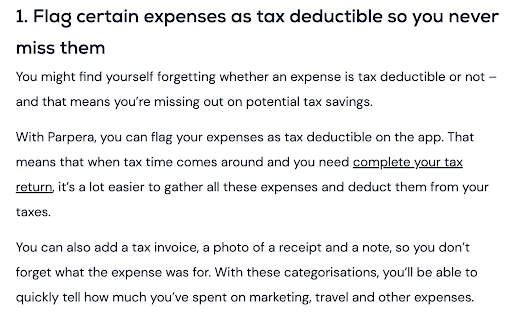
Some articles required an external expert, and with others – such as the ones where we compare Parpera to a competitor – we had to do some sort of desk research. Either way, we always went in depth, with a clear outline of features and benefits.
If we required a different level of expertise for some articles, we would get in touch with an external expert.
For example, in this article, we talked with a tax expert so he would help us give genuinely useful information to freelancers.

And in this one we talked to a veteran freelancer on how to price your services:
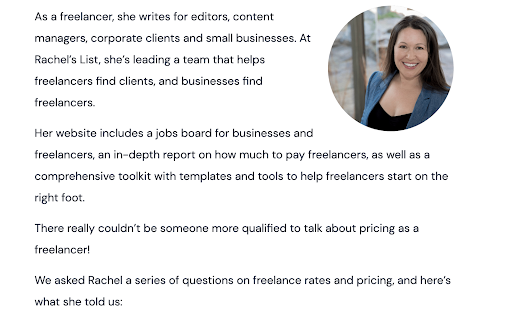
Backlink-worthy content
Although we talk a lot about Bottom of the Funnel content at Mint Studios, that doesn’t mean we don’t do Top of the Funnel.
Since Parpera was quite a new website with low authority, we knew we had to create backlink worthy content. This came in the form of a statistics post, which is to date the most comprehensive article on this topic on the internet.
Since its publication in April 2022, this article has brought in 12 backlinks, is ranking in the first position and has even brought in leads. Here’s proof via SEMRush:


We also wrote an article specifically for tax time in Australia (which is in July) with one article bringing in the most amount of organic traffic to date:

Content focused on conversions
As any content person knows, ranking is just half the battle. It’s all good to be in the first position of Google, but it’s not very useful if the people visiting don’t become customers. High traffic does not equal high conversions.
In order to do that, you need to write in-depth, high quality content.
There are a few things we put in practice here:
Content that answers the searcher’s question
We’re not going to start each article with “what is freelancing?”. Because our target market already knows that.
Instead, we worked hard to put ourselves in the position of the searcher. To do this we would:
- Ask Daniel — the person who understood his customers the most — what he thought the readers’ pain points were
- Check what content was written on the topic and see what information freelancers seem to be looking for
- Based on our research and what we’ve read, think of what people might want to find information wise.
For example, someone who is searching up “MYOB for sole trader” just wants to know if there is an alternative. That means there is no point in talking about what MYOB (another accounting software, like Xero) is, what the benefits of MYOB are, etc. Instead, we focus on answering their questions with structure.
If you read our article (MYOB for sole trader), you’ll see that we structured the articles as follows:
- Parpera vs MYOB comparison
- What makes Parpera great for sole traders?
- What you can do with a Parpera membership
If someone is looking for a solution like MYOB but for sole traders, they are looking for a specific solution. The problem with MYOB is that it’s built for accountants, and can be very complicated to use. So someone searching this up is looking for an alternative specifically for sole traders. In this case, Parpera fits the bill perfectly.
So in the article, we immediately get to the point and talk about Parpera, and how Parpera is a good alternative to MYOB. This means we give the reader the information they’re looking for immediately, and they’re more likely to turn up.
Writing that is to the point and fluff free
We’ve talked on this blog before about the importance of being succinct and to the point. Writing for businesses is writing to sell, which means you need to be focused on getting to the point, providing the right information to your reader and not wasting their time. You’re not writing for entertainment or for clicks: you’re writing for your customers.
So for example, we keep intros short and to the point:

We make the articles easy to read and scannable:

We make sure the language is concise, and there is something valuable at each sentence

Writing that talks about the product
A lot of content marketers are uncomfortable with writing about the product. They don’t want it to come across salesy, or scare away the reader. But if we keep in mind that businesses care about leads and customers, how are you going to sell if you don’t talk about your product? And side note: your product is designed to help people. If you don’t genuinely think you’re helping people, then you have another issue.
The thing is, there are ways to talk about your product without being salesy.
Example 1: talk about something related to the product
Here’s an excerpt from this article: Best Invoice App for Freelancers in Australia (That'll Help You Get Paid Faster!). See how we talk about the Parpera product to establish authority, but it’s not salesy.
“Based on conversations with freelancers in the Parpera community and our own experience building an invoice app, we've come to understand the unique needs each freelancer has when it comes to invoicing, managing payments and saving for taxes.”
Example 2: make concessions about your product to build trust
Here’s an excerpt from this article: Parpera vs HNRY: What's the Difference and Which One is Best for You?. See how we talk about the cons of Parpera too, not just the positives (and thanks to Parpera for being supportive on this):
“Cons of Parpera
We understand Parpera isn't for everyone, and we're not perfect (yet). So it helps to know about the features we don't have, which may be valuable to you.”
Example 3: go into so much detail to demonstrate that you know what you’re talking about
Parpera isn’t a super technical product, so we didn’t have to do this too much. But whenever necessary, we would go into a lot of depth on a specific topic. Here’s an example which is an excerpt from this article: Apply for a Sole Trader ABN Online (In Under 10 Minutes)
“With Parpera, you’ll be able to create and send professionally designed invoices directly from your phone within a few minutes.
Every invoice you create will automatically include your bank details and is tax compliant (whether you’re registered for GST or not). We’ve optimised the invoice for faster payments:
- All of your bank details are highlighted in the upper right-hand corner to make them easily visible to everyone.
- Clients can immediately pay your invoice with the “Pay Now” button (coming soon).
- Every invoice email has a payment link to make paying invoices easy for your clients.
- You can review every invoice email before sending it to clients and you can send yourself or your accountant a copy with each one.”
There are some unique things about Parpera that cannot be replicated elsewhere, like the fact that freelancers are easy to work with and give feedback, and that the Australian content market is a lot less competitive. And yet, the Parpera website was very young and the product was new, and we still managed to create content that brought in a good number of leads.
Daniel and his team at Parpera were an excellent client and were great to work with, which made creating content for them a pleasure and helped increase the chances of our content succeeding. We’re big fans of Parpera, the product, community and team, and are excited to see what’s next for Parpera.
Want to see if this approach might work for your company? Click below to book a free consultation with our Director of Content. 👇











